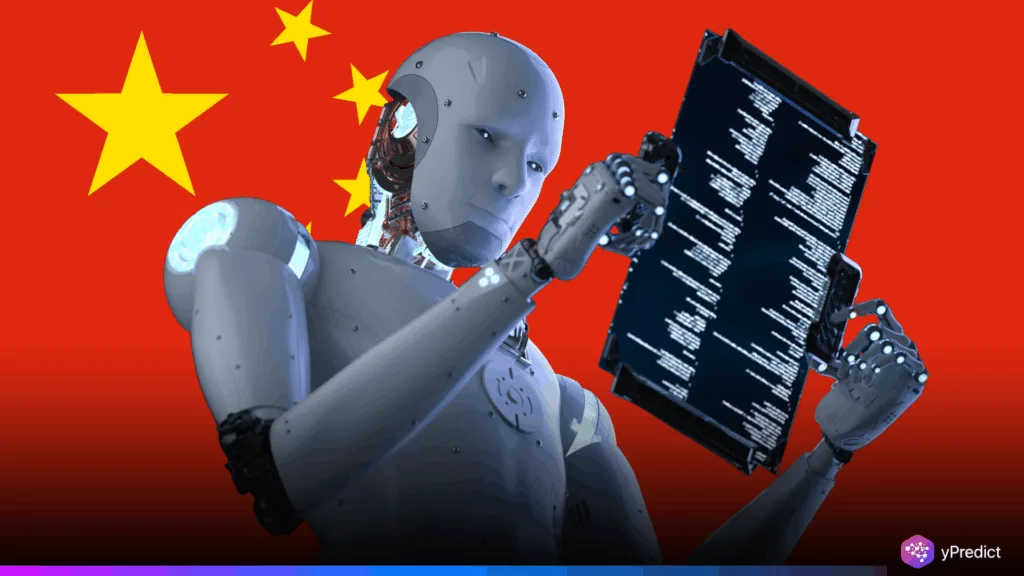
A striking meme has stirred conversations online after China unveiled its new artificial intelligence (AI) roadmap. The image presents a Chinese leader in a stiff Mao suit with the words written in bold yellow as MASTER PLAN, with the national flag in the backdrop. Humorous in nature, the meme can attract international interest since it emphasizes how ambitious the plans of China to become a leader in the development of AI can be. Posted at the same time that Beijing released new guidelines aimed at stepping up the adoption of AI, the post is an amusing mix of commentary and jokes. Behind the joke lies a serious discussion: China wants to dominate AI faster than many expected.
China’s New AI Ambitions
The new AI strategy in China poses ambitious goals that the country was not expected to achieve. The government aims to achieve 70 percent of acceptance of AI by the influential group in 2027 and expand to over 90 percent by 2030. When the country reaches 2035, it is expected to complete the transformation to an intelligent economy and smart society. These plans cut across a broad range of efforts, such as the production of advanced AI-designed chips and software systems and ultra-large-scale supercomputers.
The others on the roadmap are technologies that deal with the consumer: autonomous vehicles, service robots, smart PCs, phones, and wearables. Besides this, Beijing has promised to provide heavy fiscal and financial assistance to businesses oriented towards AI. This implies subsidies and tax breaks and loans to jumpstart the sector growth.
Critics outside China note that the timeline is unusually short compared to global studies, which suggest industrial adoption typically takes 5–10 years. But China’s history of top-down direction in technology, combined with tight data control, gives it unique leverage. The pressure from U.S. export restrictions has only amplified this push, making rapid domestic innovation a matter of national security as well as economic competition. The meme may exaggerate, but the underlying plan is indeed very bold.
The Bigger Picture: Competition and Self-Reliance
The strategy reflects something larger: China’s urgent bid for technological self-reliance. Supply chain tensions with the U.S., especially restrictions on advanced Nvidia chips, have underlined a gap that Chinese policymakers want to close as fast as possible. President Xi Jinping had already framed AI as central to “self-reliance and self-strengthening.” The new guidelines lock this vision into policy.
China has support pillars that make such a plan possible. The country already hosts a $70 billion AI industry and more than 4,000 companies. It has unmatched access to massive data sets, which are key for training AI. And its centralized state model makes directing adoption smoother than in fragmented markets.
Progress is visible: companies like DeepSeek have hinted at next-generation chips built with domestic backing. Meanwhile, policies, like the 2017 Next Generation AI Development Plan, laid the groundwork. Beijing also wants to shape global AI standards, signaling that the race is not only technical but also regulatory.
Meanwhile, question whether this speed is realistic. Some view China’s tight data ecosystem as a strategic edge. Others doubt whether industries can absorb AI so quickly. Either way, the meme has focused attention on the seriousness of Beijing’s intent.
Conclusion but also
The joke actually conceals a more serious fact: China is rapidly rolling towards one of the most ambitious AI roadmaps in the world. By making AI a central concern to its economy and strategies, Beijing is stating that it intends to proceed at full speed despite challenges such as sales limitations and technological drawbacks. The roadmap sets a high bar of global competition, whether the targets are attainable or not. To its competitors, it is loud and obvious that China will be dominant, or at the very least, among the leaders, in the next actions of technological change. The jokes on the Internet do not diminish the effectiveness of the strategy.






